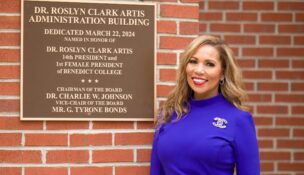Aging U.S. workforce faces changing needs
Staff //March 27, 2018//
Healthier lifestyles, better health care services and technological advances in medicine are allowing U.S. citizens to live longer lives.
With these additional years comes a need for extra income, as many retirees are finding the need to support themselves up to 20 years after leaving their original careers.
A 2017 U.S. jobs report showed approximately 20% of people 65 and older were working at least part-time, and the age group’s population-to-employment ratio was the highest in 55 years.
The Bureau of Labor Statistics expects the trend to continue. The BLS model shows 36% of those ages 65 to 69 will be an active participant in the labor market by 2024. That’s up from 22% in 1994.
Ariane Hegewisch, program director for employment and earnings at the Institute for Women’s Policy Research, said education is a key for many people returning to the workforce.
“Education certainly matters for staying in the labor market and determines how much someone can earn,” Hegewisch said. “The jobs available value education, and it’s very hard to find something if you don’t have something past a high school degree.”
She said close to 30% of current retirees between the ages of 70-80 don’t have a university degree.
“The more education you have, the more likely you will be in the workforce,” she said, adding that research also shows that those with more education make more.
“Estimated total earnings between ages 65 and 95 by education shows men with a postgraduate education make four times as much than men with just a high school education,” Hegewisch said. “Women also showed huge gains the more education they received.”
Education can also be a factor at the beginning of someone’s career. According to Hegewisch, higher education tends to lead to a desk job that is less physically strenuous, allowing a person to work past retirement age. Such jobs usually feature better retirement savings and health service incentives, meaning the longer a person works, the more they are able to save.
“If you have the qualifications, (incentives) make a huge difference to your actual earnings,” Hegewisch said.
Merrill Lynch recently asked a group of working retirees age 50-plus to list the best strategies to improve the ability to work later in life. Keeping up with technology topped the list for 50%, while 22% said taking classes.
Hegewisch said seniors should consider the field for which they are qualified and find out what type of extra education may be needed. She suggested those starting from scratch look into community colleges.
“The education is often more focused and can sometimes be a shorter route to certification,” she said.
Even with additional education, many seniors must overcome the stigma of being considered out-of-date when it comes to finding jobs in the modern marketplace. Hegewisch said certification is the most effective way to demonstrate ability.
“Digital media or business skills work for anyone, whether they are young, middle-aged or older,” Hegewisch said. “The question is what type of certification you can get. You may have worked with computers all your life, but younger people making hiring decisions may not think you know enough. It’s important to get the certificate even though it may not overcome all barriers of perception.”
South Carolina’s Senior Community Service Employment Program, administered by the S.C. Lieutenant Governor’s Office of Aging, provides a path of assistance for S.C. workers. The federal job training program focuses exclusively on low-income seniors.
Pam Grant, SCSEP director, said 86% of applicants need more training with computer literacy.
“Many of the people we work with already have the soft skills needed to find a job,” she said. “Our program provides them with a feeling of being useful and promotes good health.”
SCSEP training periods last up to 36 months, and close to half of the applicants are able to find employment. Of those, 80% of participants retain their employment for at least a year.
The program requires applicants to have family incomes at or below 125% of the federal poverty level.
“We find the mature desire of our applicants gives businesses a good product,” Grant said. “All who take part in the program feel a positive impact.”
Hegewisch said many companies offer re-skilling apprenticeships and internships targeted at older people.
The Institute for Women’s Policy Research delved into the most common occupations for men and women ages 65 to 69, with average wages of each job. Administrative assistant positions were the most common for women, with 112,406 jobs, while registered nurses made the most, an average of $31 per hour. For men, truck driver topped the list with more than 86,000 jobs, while lawyers made $61 per hour.
“Care work, including health care work, has grown a lot and has a broad range of jobs,” Hegewisch said. “The big expansion for women is access to better jobs and high levels of education that are more prevalent now.”
t















